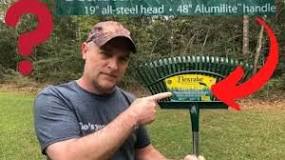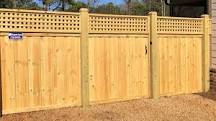So, is a power rake the same as a dethatcher? No, they’re not the same, but they do share some similarities. Both tools are designed to help maintain your lawn, but they work in different ways and serve distinct purposes. Let’s break it down!
What’s a Dethatcher?
A dethatcher is like your lawn’s best friend when it’s feeling a bit under the weather. It’s designed to remove thatch—an accumulation of dead grass, roots, and other organic material that can suffocate your lawn. Here’s what you need to know:
How It Works
- Tines: Dethatchers usually have metal tines that penetrate the soil and pull up the thatch.
- Surface Level: They primarily work on the surface, loosening up debris without disturbing the soil too much.
Benefits
- Improves Airflow: By removing thatch, you allow air, water, and nutrients to reach the grass roots more effectively.
- Healthier Lawn: A dethatched lawn is generally healthier and more vibrant.
What’s a Power Rake?
Now, let’s talk about power rakes. These bad boys are a bit more aggressive than dethatchers. They’re often used for larger areas and can tackle tougher jobs.
How It Works
- Vertical Blades: Power rakes use vertical blades to dig deeper into the soil compared to dethatchers.
- More Aggressive: They can remove not just thatch but also soil compaction and other debris.
Benefits
- Soil Aeration: By breaking up compacted soil, power rakes help improve drainage and root growth.
- Versatile Use: Great for prepping lawns for seeding or overseeding.
Key Differences
So, what sets them apart? Here’s a quick rundown:
Depth of Operation
- Dethatcher: Works mostly at the surface level.
- Power Rake: Goes deeper into the soil.
Purpose
- Dethatcher: Focuses on removing thatch.
- Power Rake: Tackles thatch but also addresses soil compaction.
Use Cases
- Dethatcher: Best for regular lawn maintenance.
- Power Rake: Ideal for more extensive lawn renovations or when dealing with heavy compaction.
Summary
In short, while both tools aim to improve your lawn’s health, they do so in different ways. A dethatcher is perfect for routine care, while a power rake is better suited for heavier lifting. Depending on your lawn’s needs, you might find one tool more beneficial than the other!
FAQ
Can I use a dethatcher on all types of grass?
Absolutely! Most dethatchers are versatile enough to work on various grass types. Just be cautious with delicate grasses; you might want to adjust settings or use a lighter touch.
How often should I dethatch my lawn?
Typically, once a year is sufficient for most lawns. However, if you notice excessive thatch buildup or poor drainage, you might want to do it more frequently.
Is renting better than buying these tools?
It really depends on your lawn size and how often you plan to use them. If you have a small yard and only need them occasionally, renting could save you some cash. But if you’re a lawn care enthusiast with bigger areas to manage, investing might be worth it!
Can I use both tools together?
Definitely! Using both can give your lawn the ultimate care it needs. Start with dethatching to remove surface debris and then follow up with power raking for deeper aeration.







